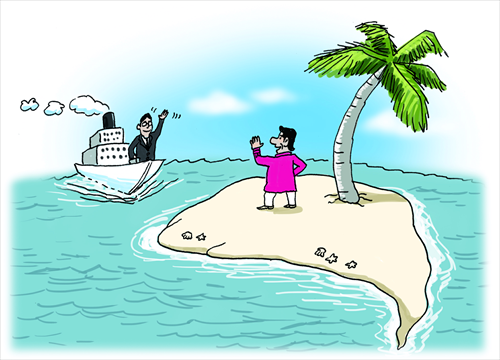‘New normal’ brings change to Latin America

Illustration: Liu Rui/GT
Former Chinese leader Deng Xiaoping, who initiated the country's reform and opening-up, once said the 21st century belongs to Latin America. Premier Li Keqiang's visit to Brazil, Colombia, Peru and Chile again demonstrates China's will to advance its ties with these Latin American countries, with which China's trade in 2014 accounts for 57 percent of its entire trade with Latin America. While Latin America as a whole has become an important link of China's global partnership network, and Beijing faces opportunities and challenges in improving this network in the region.
World Bank President Jim Yong Kim said recently that China's economic slowdown and dropping demand for raw materials have had a huge impact on the economy of Latin America where the investment stays at a low level and the situation for oil exports is worse. The International Monetary Fund said the region's economy grew by just 1.3 percent in 2014, down by nearly two thirds from three years ago. With economic difficulties there have been some protests in countries like Brazil. Obviously, as Chinese economy moves into a "new normal" and Latin America meets new development challenges, the two sides need to jointly work out solutions to maintain the momentum for their relationship. China's economic restructuring will help upgrade the bilateral cooperation and deal with the changes in a sensible way. This is conducive to strengthening the resilience of bilateral ties.
During his visit Li is set to bring massive investment direly needed by these countries. Brazilian President Dilma Rousseff hoped for more investment from China to improve her country's shabby railways, roads, ports and airports. Brazil, Peru and China will study the feasibility of building a new railway that goes across South America and connects ports along the Atlantic and Pacific Oceans in a bid to promote bulk commodity export. The 3,500-kilometer railway is expected to cost at least $50 billion. Li has been called the "super salesman" of China's railways.
Cooperation on major infrastructure programs often produces positive spill-over effects in spheres such as finance and trade. The Industrial and Commercial Bank of China and Brazil Caixa Economica Federal will co-establish a $50 billion fund to finance programs like the transoceanic railway. In January, a 2015-19 cooperation plan was passed by the first ministerial meeting of the China-CELAC Forum, which listed 13 focuses for cooperation including infrastructure and finance.
During Li's visit, China and Brazil reached agreements calling for $53 billion in Chinese investment in Brazil. As Jose Graca Lima, Brazil's undersecretary of state who oversees Asia and Oceania, said, this suggests Brazil is embracing a second wave of Chinese investment that is moving away from the previous raw materials and trade of bulk commodities toward industry, manufacturing and infrastructure. According to Brazilian statistics, over the past 13 years, its trade with China increased from $3.2 billion to $83.3 billion.
China is intentionally adjusting its economic ties with Latin American countries. The region's exports to China, an important market, rose from 3 percent to 9 percent of its total exports in the past decade. However, 90 percent of the exports are agricultural products, mineral and oil and gas.
One important target of Li's visit is to deepen bilateral cooperation on productivity and free trade agreement (FTA), which means China is willing to import more industrial products from Latin American countries and create more jobs for them. China's investment in Latin America was only $231 million 10 years ago and in the decade to come China's stock of foreign direct investment in the region will reach $250 billion.
Apart from readjusting economic ties, Beijing also hopes to "rebalance" its diplomacy with Latin American countries. Despite the importance of Brazil and Venezuela, China also needs to invest in its relations with other countries.
Li's visit to Colombia, one of the few countries on the continent that have close ties with the US, is the first time by a Chinese premier in three decades.
Li is also set to attend a meeting for building China's strategic and economic dialogue mechanism with Peru, as China is Peru's largest trade partner. Chile was the first Latin American country to establish diplomatic ties and sign an FTA with China.
All in all, despite the long distance from Latin America, Beijing is rediscovering countries in the region as part of its ambition of advancing the global partnership network.
The author is a research fellow with the Charhar Institute and an adjunct fellow with the Center for International and Strategic Studies, Peking University. opinion@globaltimes.com.cn